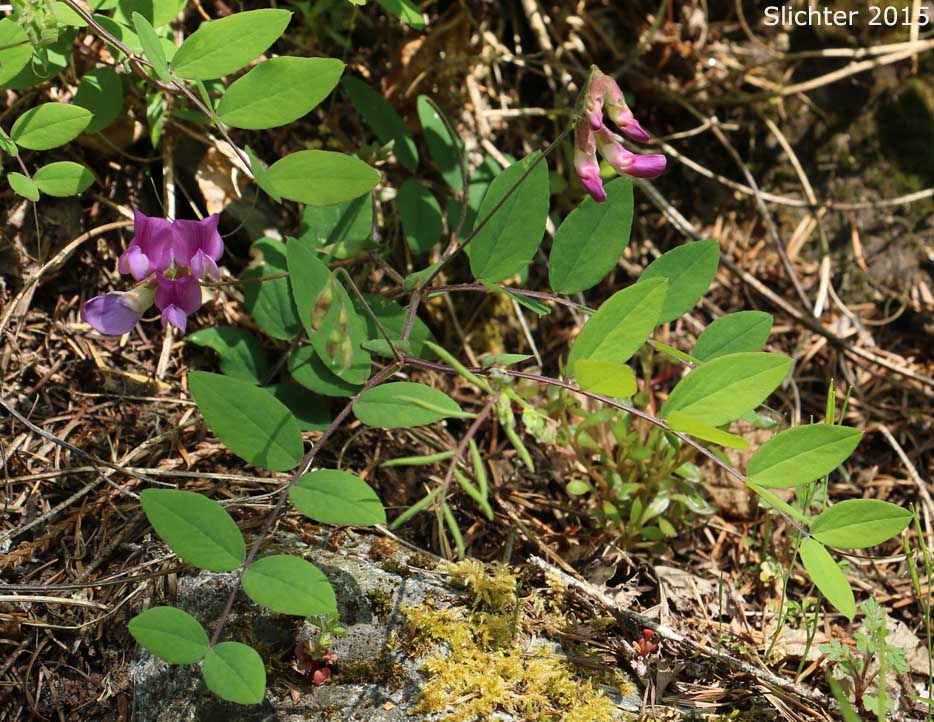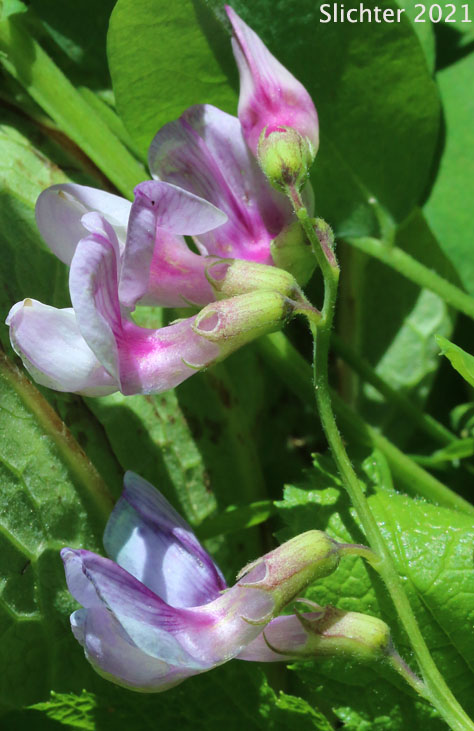Leafy Pea, Leafy Peavine
Lathyrus polyphyllus
Leafy peavine blooming in open woods on the banks of the Lewis River along the Lewis River Trail #31, Gifford Pinchot National Forest........May 3, 2015.Characteristics:
Leafy pea is a fairly attractive perennial wildflower with erect to ascending stems rising 40-100 cm high from rhizomes. The stems are glabrous and 4-angled but not winged. The leaves are alternate on the stems and are pinnately compound and by the time the plants bloom, the leaves have dropped from the lower half of the stems. Individual leaves consist of 5-8 pairs of leaflets with simple to forked prehensile tendrils at the leaf tip. The leaflets are ovate-lanceolate to lanceolate-elliptic in outline and measure 2.5-6 cm long and 1-3 cm wide. The stipules are generally more than half as long to nearly as long as the leaflets and are acute to rounded at the base and tapering to a point at the tip with toothed margins.
The racemes contain 5-13 bluish-purple flowers which age to bluish. These measure 16-20 mm long with erect banner and wings longer than the keel, the wings curved upwards so that the front of the banner may be hidden. The calyx measures 7-13 mm long with calyx teeth of varied length. The upper pair of teeth are narrowly triangular to lanceolate and about 1/3-2/3 the length of the lateral pair of teeth which are linear-lanceolate in shape. The lowest tooth is linear to linear-lanceolate in shape and roughly equal to the tube and from 1-2 mm longer than the lateral pair of teeth. The calyx teeth are typically glabrous, but may bear some hairs on some plants. The style is bent upwards and flattened with a cluster of hairs on the posterior surface at its tip. The glabrous pods range from 4-7 cm long and 4-9 mm wide.
Leafy pea may be found in open woods and prairies from the lowlands to moderate elevations in the mountains.
Leafy pea may generally be found west of the Cascade Mt. crest to the Pacific coast from Puget Sound south through the Willamette Valley and Coast Range to Lake County in California.
The photo above shows a close-up of the raceme of leafy pea as seen along the Angel's Rest Trail in the western Columbia River Gorge........April 30, 2005.
Paul Slichter



